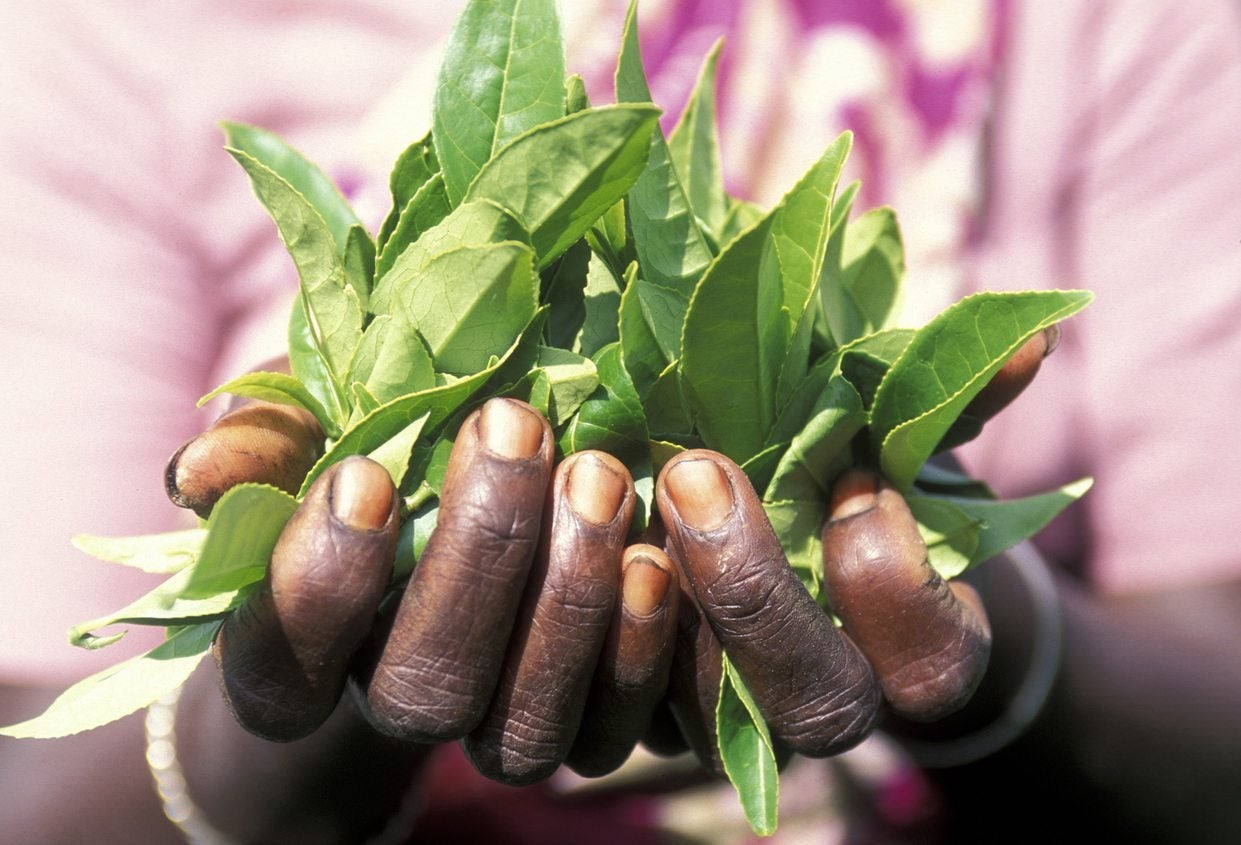Pruning Tea Leaves – When To Prune A Tea Plant


Tea plants are evergreen shrubs with dark green leaves. They have been cultivated for centuries in order to use the shoots and leaves to make tea. Tea plant pruning is an essential part of the shrub’s care if you are interested in harvesting its leaves for tea. If you are wondering how to prune tea plants or when to prune a tea plant, read on for tips.
Tea Plant Pruning
The leaves of tea plants (Camellia sinensis) are used to make green, oolong, and black teas. The processing of the young shoots involves withering, oxidation, heat processing, and drying. Tea is usually grown in tropical or subtropical areas. Plant your tea shrubs in a warm site that gets full sun for best growth. You’ll need to plant them in well-drained, acidic, or pH neutral soil some distance from trees and structures. Tea plant pruning begins quickly after planting. Why do you prune young tea plants? Your goal in pruning tea leaves is to give the plant a low, wide framework of branches that will produce many leaves each year. Pruning is essential to direct the tea plant’s energy into leaf production. When you prune, you replace old branches with new, vigorous, leafy branches.
When to Prune a Tea Plant
If you want to know when to prune a tea plant, the best time is when the plant is dormant or when its growth rate is the slowest. That’s when its carbohydrate reserves are high. Pruning is an ongoing process. Tea plant pruning involves heading back the young plants repeatedly. Your objective is to form each plant into a flat bush some 3 to 5 feet (1-1.5 m.) tall. At the same time, you should think about pruning tea leaves periodically in order to encourage new tea leaf growth. It is the upper leaves on each branch that can be harvested to make tea.
How to Prune Tea Leaves
In time, your tea plant will form the desired 5 foot (1.5 m.) flat-topped shrub. At that point, it’s time to start tea plant pruning again. If you are wondering how to prune tea leaves, just cut the bush back to between 2 to 4 feet (61 cm. to 1 m.). This will rejuvenate the tea plant. Experts suggest that you develop a pruning cycle; each year of pruning followed by a year of not pruning or very light pruning produces more tea leaves. Light pruning when used in reference to tea plants is called tipping or skiffing.
Sign up for the Gardening Know How newsletter today and receive a free copy of our e-book "How to Grow Delicious Tomatoes".

Teo Spengler is a master gardener and a docent at the San Francisco Botanical Garden, where she hosts public tours. She has studied horticulture and written about nature, trees, plants, and gardening for more than two decades, following a career as an attorney and legal writer. Her extended family includes some 30 houseplants and hundreds of outdoor plants, including 250 trees, which are her main passion. Spengler currently splits her life between San Francisco and the French Basque Country, though she was raised in Alaska, giving her experience of gardening in a range of climates.